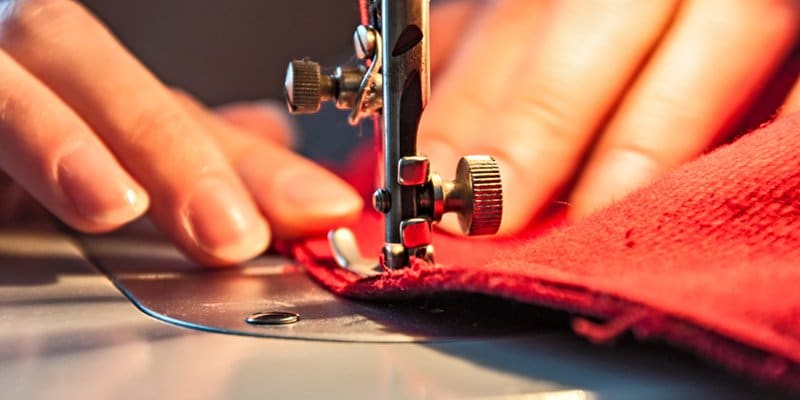Most furniture shoppers consider two things when choosing upholstery fabric. Beauty is first and the easiest to contemplate. The right fabric color can bring a room alive, blend with existing decor, or inspire a whole new look for your space. Durability matters, too. Expectations may vary depending on whether a sofa or other upholstered piece will be in a formal area of your home or a space where kids (and pets) rough-house. Or maybe you need it to do double-duty.
But there’s a third key fabric characteristic. Conscious consumers who’ve learned about the health risks of toxic chemicals in furniture also demand fabric safety. There’s just no good reason the fabric on a new sofa or armchair should undermine your health.
Sofas without toxic chemicals
What’s even more important than the pop of color fabric brings into your home is what it does not bring. You can’t see the carcinogenic mordants used in toxic dyes, or the sprayed-on flame retardants or nanoparticle treatments that coat most upholstery—but in tiny daily doses over years of use, they migrate from furniture into your body. Medical researchers say that the accumulation of these chemicals in body tissues poses real health dangers over the long term. Cancer, obesity, infertility, thyroid disorders and developmental brain disorders such as autism and ADHD are among the increased risks identified so far.
Organic fabrics make sense
To be sure a fabric you’re considering is nontoxic and safe for your family’s health, look for certified organic fabric. That’s not a fabric merely described as “organic,” but one that is also legally certified by an independent, third-party agency. Examples of widely-recognized, reputable certifications for organic textiles are GOTS (Global Organic Textile Standard) and USDA Organic (National Organic Program). Some fabrics may also have been tested for harmful substances by Germany’s Eco Institut or Oeko-Tec. These seals ensure that organic fabrics have met stringent requirements throughout their production—including growing, processing and finishing.

Best fabric choices
Among the most appropriate organic fabrics for upholstery use are hemp and cotton (or a blend of the two). Although you could choose a delicate linen or silk, for all but the most controlled environments, organic hemp or organic cotton will perform most reliably over many years of use.
Organic Hemp
Tough as rope (its original use) and as sturdy as any manufactured synthetic, hemp fibers can be woven into a premium, long-staple textile that is very strong and even puncture resistant. Not surprisingly, this makes hemp a popular choice for couches that are frequently challenged by pet claws or jumping children. For sofas in family rooms or any high-activity area where decorum may not hold, hemp is a strong and reliable option. Its texture isn’t velvety but it’s perfectly suited for high-energy families.
Organic Cotton
Softer than hemp, organic cotton is another excellent upholstery choice. Cotton duck is made with a stronger weave than the cotton fabrics used in clothing and curtains, for example. It’s a form of fine canvas that tailors exceptionally well, and is available in a wide spectrum of decor-friendly colors.
Organic Hemp-Cotton Blend
Offering the best features of both fibers, a blend of hemp and cotton gives reliable strength plus greater comfort to the touch. Not as puncture-resistant as pure hemp and not as soft as pure cotton, the hemp-cotton blend is a fine middle ground for multi-use upholstery. This is an excellent selection for furniture you’ll use both for guests and for casual daily use.
